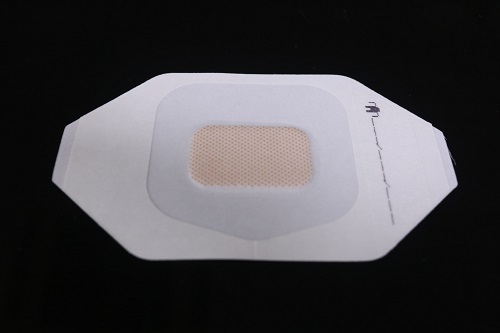Waterproof film dressings have become an essential part of modern wound care, providing protection and comfort to patients. This advanced medical solution is widely used in hospitals, clinics, and even at home due to its versatility and effectiveness.
What is a waterproof film dressing?
A waterproof film dressing is a thin, lightweight, transparent, and adhesive dressing used to cover wounds, surgical incisions or catheterization sites. It is made of polyurethane or a similar material that forms a barrier to water, bacteria, and other contaminants while allowing oxygen exchange and water vapor to pass through. The transparent nature of the dressing allows healthcare professionals and patients to monitor the condition of the wound without removing the dressing.
Key Benefits
- Waterproof protection: Its main advantage is its ability to keep the wound dry, making it ideal for patients who need to bathe or shower. It helps prevent waterborne contaminants from entering the wound site, thereby reducing the risk of infection.
- Breathable: while blocking moisture and bacteria, it still allows the wound to breathe, creating a moist healing environment that accelerates tissue repair.
- Comfort and Flexibility: The film is pliable and conforms to the body's curves, making it comfortable to wear for long periods of time, and is suitable for joints and other mobility areas.
- Transparency: Transparent design allows for visual inspection without removing the dressing, minimizing interference with the healing process.
- Firm Bonding, Gentle Removal: Firm bonding and easy removal reduce pain and trauma during dressing changes.
Common Applications
- Post-operative incision care
- Minor cuts and abrasions
- Venous catheter site protection
- Superficial burns
- After tattoo care
In many cases, waterproof film dressings are used in conjunction with absorbent pads for wounds that produce exudate.
Method of application and removal
Directions for use:
- Thoroughly clean and dry the wound area.
- Select a dressing of appropriate size to cover the wound edges by at least 1 inch.
- Remove the backing and gently apply the adhesive surface to the skin.
- Smooth out air bubbles to ensure good adhesion.
Removal Method:
- Gently lift one end of the dressing.
- Peel slowly along the skin rather than vertically to minimize discomfort.
Best Practices and Precautions
- Avoid use on heavily exuding wounds unless used with absorbent pads.
- Monitor for signs of skin irritation or allergic reaction.
- Change the dressing as directed, usually every 3 to 7 days, or sooner if the dressing is loose or soiled.
Waterproof film dressings offer a reliable, hygienic, and convenient solution for wound protection and healing. Their ability to protect wounds while providing comfort to patients makes them a must-have in professional medical facilities and home first aid kits. Used correctly, they can significantly improve healing and prevent infection.

